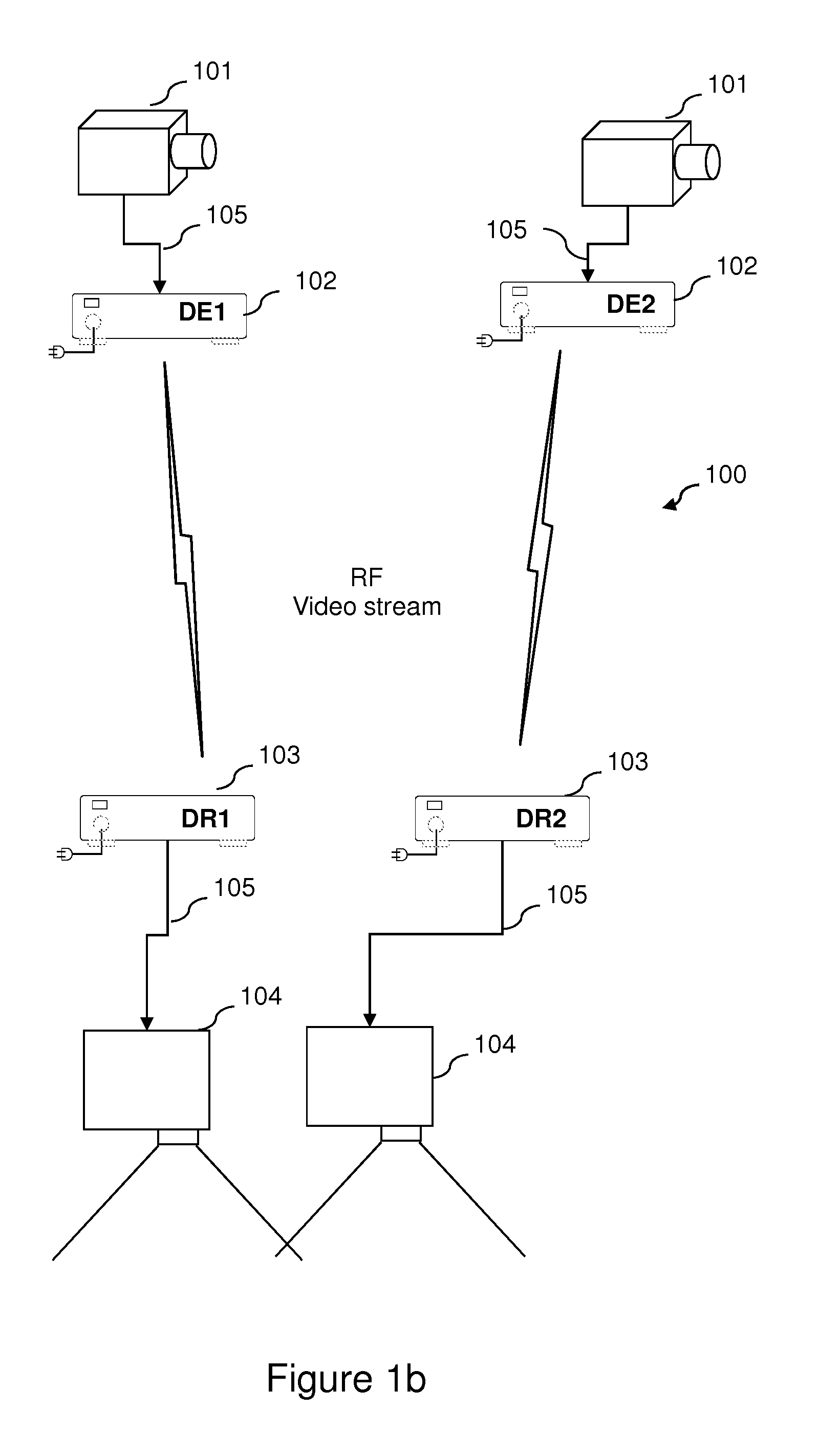Method of synchronization, corresponding system and device
a synchronization and corresponding system technology, applied in the field of information and communication technology, can solve the problems of insufficient synchronization of slave clocks, weak jitter of slave clocks, and inability to receive dedicated cables, so as to save bandwidth, simplify implementation, and find visual comfor
- Summary
- Abstract
- Description
- Claims
- Application Information
AI Technical Summary
Benefits of technology
Problems solved by technology
Method used
Image
Examples
Embodiment Construction
[0117]FIGS. 1a to 1c present various non-illustrative contexts in which the invention may be applied, in particular for the purposes of supplying a common cadence, or target frame rate denoted FlmTarget below, to all the devices of a distribution system for distributing video stream. The use of such a common cadence makes it possible to avoid re-synchronization of the devices in case of switching, for a receiving device, between sending devices or nodes linked to sources or, for a sending device, between receiving devices or nodes provided for the display of the video stream.
[0118]FIG. 1a presents a first scenario of use of a wireless multi-projection system 100. The system 100 comprises in particular a centralized video source 101 able to supply several video outputs simultaneously (PC video server for example of which the two source outputs are not synchronized). The video source 101 is connected to a sending device (DE) or sending node 102 (the network nodes connected to one or m...
PUM
 Login to View More
Login to View More Abstract
Description
Claims
Application Information
 Login to View More
Login to View More - R&D
- Intellectual Property
- Life Sciences
- Materials
- Tech Scout
- Unparalleled Data Quality
- Higher Quality Content
- 60% Fewer Hallucinations
Browse by: Latest US Patents, China's latest patents, Technical Efficacy Thesaurus, Application Domain, Technology Topic, Popular Technical Reports.
© 2025 PatSnap. All rights reserved.Legal|Privacy policy|Modern Slavery Act Transparency Statement|Sitemap|About US| Contact US: help@patsnap.com



